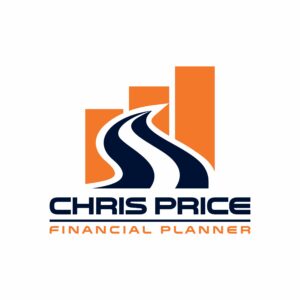Written by Christopher Price
Is an ESOP the Exit Strategy You’ve Been Looking For?
As a business owner with $5 million to $50 million in revenue, you’ve likely spent years, maybe decades, building your company into what it is today. You’ve put in the time, effort, and sacrifice to create a successful enterprise. Now, as you start to think about the next chapter of your life, a key question arises: How will you transition out of your business?
• Have you considered how to preserve your legacy while getting the value you deserve?
• Do you want to ensure that your employees, who helped build the business, are rewarded and the company’s culture remains intact?
• Are you seeking a tax-efficient way to sell your business that benefits both you and the employees who rely on it?
If these questions resonate with you, an Employee Stock Ownership Plan (ESOP) could be the perfect exit strategy.
1. Introduction to ESOPs as a Business Exit Strategy
Overview of Employee Stock Ownership Plans (ESOPs)
An Employee Stock Ownership Plan, or ESOP, is a qualified retirement plan that allows employees to gradually become owners of the company they work for. In an ESOP, the company sets up a trust, and employees receive shares over time, building equity as the business grows.
For business owners, especially those with annual revenues in the range of $5M to $50M, selling through an ESOP can provide a smooth exit while preserving the company’s legacy and rewarding employees for their contribution. The appeal of selling to an ESOP is growing among business owners who want to retire or reduce their involvement but also care deeply about the long-term success of their company and employees.
Why Choose an ESOP for a Business Exit?
ESOPs offer unique benefits, especially in comparison to a traditional sale to a third party or private equity firm. First, they ensure continuity of business operations, keeping the company under employee ownership. This often results in a more stable transition than selling to an outside buyer who may have different objectives, such as restructuring or relocating the business.
Here are some key benefits for a business owner considering an ESOP:
• Tax Benefits: ESOPs offer several tax advantages for sellers and companies, making it a tax efficient way to transition out of a business.
• Legacy Preservation: Selling to employees ensures the company’s values and culture continue under employee ownership.
• Employee Loyalty: Employees are more motivated to perform when they have a stake in the company, often resulting in improved business performance post-sale.
Many business owners find the ESOP route appealing because it provides flexibility in terms of ownership transfer and the potential for continued involvement with the company, if desired.
2. Understanding the Financial Structure of ESOPs
How ESOPs are Funded
The structure of an ESOP transaction depends on how the ESOP is funded. ESOPs can be leveraged or non-leveraged. In a leveraged ESOP, the company borrows money to buy out the owner’s shares, with the loan being repaid over time through the company’s cash flow. In a non-leveraged ESOP, the company contributes cash to buy the owner’s shares gradually.
For businesses generating $5M to $50M in revenue, cash flow and debt capacity are key factors in determining the funding structure. Let’s take a deeper look at the two primary methods:
• Leveraged ESOP: In a leveraged ESOP, the company borrows money, typically from a bank, to buy a portion or all of the owner’s shares. This is an attractive option for business owners who want to sell the majority of the company immediately. The business then repays the loan using future profits, while employees receive shares as the loan is paid off.
• Non-Leveraged ESOP: Here, the company uses existing funds, either through profits or reserves, to gradually purchase shares from the owner. This method works well if the owner is not in a hurry to exit and prefers to phase out ownership over time.
Valuation of the Business for an ESOP
The process of selling a business to an ESOP starts with a professional valuation of the company. For businesses with revenues between $5M and $50M, the valuation typically revolves around earnings before interest, taxes, depreciation, and amortization (EBITDA). A typical multiplier for a small to mid-sized business might be 4x to 6x EBITDA, depending on factors like industry, growth potential, and market conditions.
For example, let’s take a manufacturing company with $8M in revenue and an EBITDA of $2.5M. Using a 5x multiplier, the business could be valued at $12.5M. This valuation is critical for determining how much equity the ESOP will buy and how much financing is required if it’s a leveraged ESOP.
3. Tax Implications of Selling to an ESOP
Tax Benefits for the Seller
One of the most compelling reasons to sell to an ESOP is the tax advantages available to the seller. Under Section 1042 of the Internal Revenue Code, a seller can defer capital gains taxes by reinvesting the proceeds in Qualified Replacement Property (QRP). This means the business owner can avoid paying taxes on the sale proceeds as long as they reinvest in stocks, bonds, or other qualifying investments.
For example, if a business owner sells their $10M company to an ESOP and elects a Section 1042 rollover, they can potentially defer capital gains taxes on the sale. This creates a significant financial advantage compared to selling to an outside buyer, where the tax burden could be substantial.
Tax Benefits for the Business and Employees
The company itself also benefits from favorable tax treatment. Contributions to the ESOP are tax deductible, including both principal and interest payments if the ESOP is leveraged. In an S Corporation ESOP, the ESOP’s ownership percentage is exempt from federal income taxes. This means if an ESOP owns 100% of an S-Corp, the company may effectively operate without paying federal income taxes, which can significantly improve cash flow.
For instance, a $6M revenue company could use ESOP-related tax deductions to reduce its taxable income, allowing the company to reinvest more into operations, employee benefits, or debt repayment.
4. Legal and Structural Considerations
Setting up the ESOP Trust
To implement an ESOP, the business must create a trust that will hold the employees’ shares. This trust acts as the entity that officially owns the business shares on behalf of the employees. The ESOP trustee is responsible for managing the trust and ensuring that employee interests are protected. In many cases, a professional trustee is hired to fulfill this role.
Regulatory Considerations
ESOPs must comply with the Employee Retirement Income Security Act (ERISA) and IRS regulations to maintain their status as qualified retirement plans. This involves regular valuations, fiduciary responsibilities, and fair share distribution to employees.
5. ESOP Implementation Example
Case Study: A Business Owner Selling a $12M Revenue Company
Let’s consider the example of a business owner who operates a successful service company with $12M in revenue and $2.5M in EBITDA. The owner is looking to retire but wants to ensure the company stays intact and employees are rewarded for their contributions.
The company is valued at 5x EBITDA, or $12.5M. The owner decides to sell 70% of the company to an ESOP, using a leveraged structure. The transaction is funded with 30% seller financing, 50% bank financing, and 20% from the company’s reserves.
Over time, the company uses its cash flow to repay the loan, while employees gradually receive ownership stakes. Five years after the sale, the business is thriving, employee morale is high, and the owner has received the full value of the sale.
6. Challenges and Risks of ESOPs
While ESOPs offer numerous advantages, they are not without challenges. A leveraged ESOP, in particular, requires careful cash flow management to ensure the business can handle debt repayment. Additionally, employees must be educated about their new roles as part-owners, which may require a cultural shift within the company.
7. Conclusion: Is an ESOP Right for Your Business?
Selling your business is one of the most important decisions you’ll ever make. If preserving your legacy, benefiting your employees, and achieving tax efficiency are important to you, an ESOP might be the ideal exit strategy. However, it’s essential to consult with financial advisors, legal experts, and ESOP specialists to determine if it’s the best fit for your company’s unique situation.
Representatives do not provide tax and/or legal advice. Any discussion of taxes is for general informational purposes only, does not purport to be complete or cover every situation, and should not be construed as legal, tax or accounting advice. Clients should confer with their qualified legal, tax and accounting advisors as appropriate. Securities and investment advisory services offered through qualified registered representatives of MML Investors Services, LLC. Member SIPC. www.SIPC.org 1000 Corporate Drive, Floor 7 Fort Lauderdale, FL 33334 Telephone # (954) 938-8800
CRN202709-7462433






